The X Button
Restored Nation
by Todd Ciolek,

Puyo Puyo is part of this week's column, and that means it's time once again to talk about Compile, the original makers of Puyo Puyo.
Having mentioned Compile many times before, I'll go for the short version: Compile made all sorts of games in the late 1980s and early 1990s. Then they made Puyo Puyo for Sega, and it was huge. Then Compile made very little that wasn't Puyo Puyo. Then Compile broke up. Their members landed everywhere from the shootersmiths at Raizing/Eighting to Neptunia developer Compile Heart, the latter of has the rights to the Compile catalog locked away somewhere.
Ah, but what a catalog that was! In their best years, Compile made shooters, RPGs, action titles, puzzle games, and even put out a “disk magazine” for the MSX computer. If you had an MSX and lived in Japan, you could regularly buy a collection of mini-games, playable demos, and other tidbits from the Compile stable. They also pushed their own mascot, Randar, in many games. Here he is eying the lunar surface in Gun Nac for the NES.
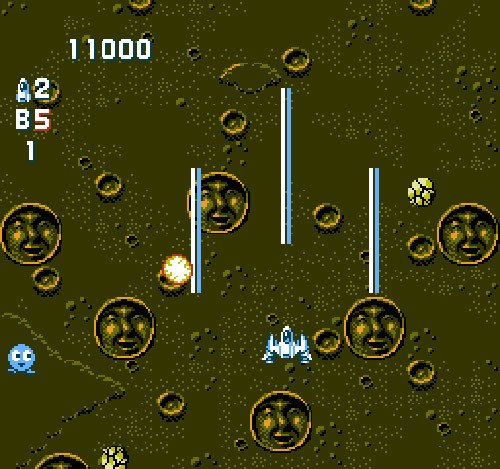
Compile is remembered most fondly for their shooters, and with good reason. M.U.S.H.A. for the Sega Genesis and Spriggan for the PC Engine remain two of the best treatments of the genre, and The Guardian Legend, a shooter/RPG hybrid, is my favorite NES game. And there are plenty more: Zanac X Zanac on the PlayStation, various Aleste games spread across various consoles, and the Sega Master System's best Zelda clone, Golvellius: Valley of Doom. Oh, and Gun Nac is pretty fun, even if it has a disconcerting weapon-shop clerk.
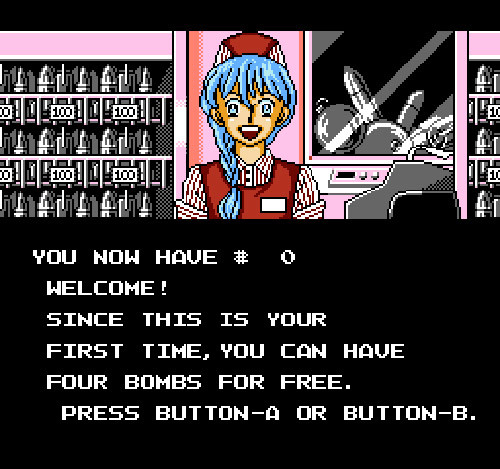
Beyond Compile's lineup of games, I miss the niche they occupied. Compile was a prolific company that stood squarely in the middle of the industry; never too big to annoy, never too small to easily ignore. Today's game industry seems depressingly bifurcated at times. Independent studios labor to release one game a year, while high-level companies grow so unwieldy that they lay off a major game's development team right after shipping it. It'd be nice to have some of that center back.
NEWS
DRAKENGARD 3 DLC REVEALS CUTE CARNAGE
Drakengard 3 is full of contrasts. It's technically about Zero, an Intoner goddess who just up and decides one day to violently murder all of her deity sisters. On the other hand, she has an adorable dragon sidekick who sings cute little theme songs. That dichotomy reaches great heights in the recently announced downloadable extras for Drakengard 3, as they let players control each of Zero's doomed sisters for a little while.

Each bonus prequel sends one of the numbered Intoner women rampaging through the blood-drenched combat that takes up a good chunk of Drakengard 3's gameplay. The bookish One fights with a bladed throwing circle and a dragon of her own, while the other sisters are accompanied by their acolytes. Two and Five wield swords, Three has scissors, and Four just wears gloves and fights hand-to-hand. It's important that they all have some armaments, as the prequel chapters also include new weapon-derived stories, just like the main Drakengard 3 does. One last DLC episode covers Zero's early years with her dragon Mikhail, who used to be a lot more mature.
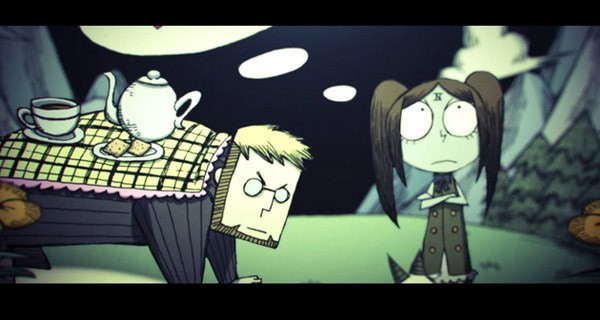
All of this marauding is bookended by cartoonish artwork that recalls Invader Zim or South Park. They'd be downright precious if they weren't just brief respites from all the screaming and bloodshed that unfolds throughout the rest of Drakengard 3. It also makes me wonder why Drakengard 3 just doesn't let us play as the various Intoners in the central game, since they're all promoted as major characters in the artwork and a spin-off manga. But this is a game that's all about crushing anything good and innocent in the world.
And how will Square Enix handle these spare stories for the Western release of Drakengard 3? One's prologue comes with the game's limited-run Collector's Edition, though Square's said nothing about the rest of them. However, Square announced the second pre-order bonus for Drakengard 3: Nier and Kaine costumes for Zero, and an Emil-like hat for her dragon. The original Japanese voice-acting track was the first bonus, available only if you reserved the game before March 3, and you'll have until April 8 to get the second bonus. I'm sure these bonuses will be available to buy separately later on. Isn't that how it always goes?
Square Enix also put up a translated preview of the Drakengard 3 novella. It's all a lot of promotional trouble for a game which, at this writing, isn't getting wide distribution. It'll get a digital release on the PlayStation Network, but material copies are limited to Square Enix's website and, apparently, Play-Asia.
HATSUNE MIKU LANDS ON VITA WITH A BEEP OF JOY
Sega announced a “March” release date for the Vita version of Hatsune Miku: Project Diva F, which we probably should've read as “as soon as possible in March.” The rhythm game is out right now on the PlayStation Network.

The song selection for the Vita's Project Diva F is the same as the PlayStation 3 edition that crept out last year, though this portable incarnation has touch-screen support for matching the various symbols that cycle all about the virtual pop star. This particular step in the ongoing Hatsune Miku takeover of the world will run you thirty bucks.
IMPORT ROUNDUP: FEBRUARY
PUYO PUYO TETRIS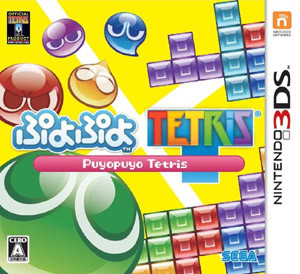 Developer: Sonic Team
Developer: Sonic Team Publisher: Sega Platform: PlayStation 3/Wii U/PS Vita/Nintendo 3DS Tetris has many imitators but few real competitors. The likes of Pac-Attack, Hatris, Blockout, and Tecmo Stackers invited no crazed fandoms. But then there was Puyo Puyo, a cute puzzle game that spread like a virus across every major console in the 1990s. In North America it was known as Kirby's Avalanche on the Super NES and Dr. Robotnik's Mean Bean Machine on the Genesis, but in Japan Puyo Puyo wore no disguises. It spawned its own merchandise, spin-offs, and lodged itself in broader pop culture for a time. Puyo Puyo endures today, even after the fall of its original developer Compile. Dr. Mario may have Nintendo's backing, but it's Puyo Puyo that put up the biggest challenge to the Tetris throne, and it's Puyo Puyo that Sega now mashes up with its competition. Puyo Puyo Tetris serves up the two falling-block titans side by side. A player can adopt one game while the opponent takes on the other, though the rules stay firm. Puyo Puyo matches up four blobs at a time while dealing with gray neutral blocks that fall from above. Tetris stacks shapes to clear lines, and the penalty arises with annoyingly gapped lines that appear below your stack of blocks. One mode also lets players shift between the two puzzle approaches in the midst of a match. It doesn't combine the two games into some monstrous fusion of blobs and blocks, but handling both play styles at once is compelling enough.
Import Barrier: The basic gameplay is easy to navigate, and even the more detailed challenges in various modes aren't that hard to figure out. Chances of a Domestic Release: Surprisingly dim, considering how easy a localization would be. Sega has announced nothing so far, leaving some to speculate that their Tetris contract covered only one market. Odd Omission: It's strange that Sega didn't throw in Columns for good measure.
|
SUPER HEROINE CHRONICLE 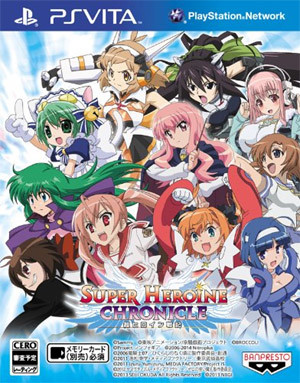 Developer: Banpresto
Developer: Banpresto Publisher: Bandai Namco Games Platform: PlayStation 3/PS Vita Some see the anime industry in terms of its two sure-fire fan lures: giant robots and cute girls. The two ebb and flow, interweaving like yin and yang through an anime ecosystem of model kits, overpriced DVDs, and licensed video games. The crossover strategy-RPG is largely held by the giant robots, as symbolized by the ongoing Super Robot Taisen series. Yet Super Heroine Chronicle aims to even the score. Much like Super Robot Taisen, Banpresto's Super Heroine Chronicle is a pile-up of characters from various anime series: Louise, Tiffania, and Siesta from Familiar of Zero; Houki, Cecelia, Laura, Huang Lingyin, and Charlotte from Infinite Stratos; Rena, Rika, and Mion from Higurashi no Naku Koro ni; Di Gi, Rabi, and Petit from Di Gi Charat; Aria and Shirayuki from Hidan no Aria; Koto and Yase from Kyousougiga; Kurumi, Haruka, Aoi, and Tesla from Kaito Tenshi Twin Angel; Tsubasa, Hibiki, and Chris from Senki Zessho Symphogear; and for the old-school crowd, Rem from Dream Hunter Rem. It also features Super Sonico, who, I have just been informed, is an anime heroine and not a gray-market knockoff of Sonic the Hedgehog. All of these young women clash in strategic formations that burst into close-up battles littered with elaborate attacks and high-pitched catchphrases. It's primarily a showpiece for fans who long to see Symphogear or Twin Angel in huge-headed form, and not really for the casual player who just wants a solid strategy-RPG. Super Heroine Chronicle also invents a few original characters for its own limited use. But hey, perhaps Meru and Noel and Eva Valentine will headline the first Super Heroine Chronicle Original Generation game in a few years. Import Barrier: There's plenty of dialogue to sit through. But if you can figure out a Super Robot Taisen game, you can figure out Super Heroine Chronicle. Chances of a Domestic Release: Pretty darned low. Most publishers wouldn't bother with a game where the most recognizable property is Familiar of Zero. Odd Omission: Plenty, considering how many characters Bandai could pick. Where are the heroines from Cosmos Pink Shock, Sailor Victory, or Legaciam? |
YAKUZA RESTORATION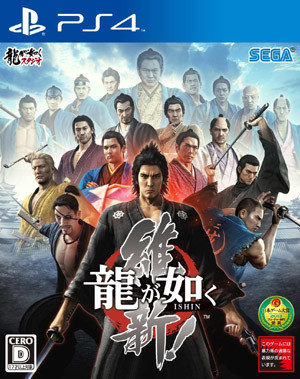 Developer: Sega
Developer: Sega Publisher: Sega Platform: PlayStation 4/PlayStation 3 Yakuza remains Sega's most prestigious series in Japan. Each new game invariably boasts celebrity talent, realistic in-game diversions, and elaborate tales about Japan's criminal element. Sadly, few of these strengths really count in the North American market, where we tend to prefer our mobster melodrama strained through Grand Theft Auto's more obscene mischief. The Yakuza series is always a wild card when it comes to localizations; North America got the first four Yakuza games and the zombie filled Dead Souls, but not the fifth proper Yakuza or either PSP brawler. And we certainly didn't get Kanzan, the Yakuza spin-off that re-cast all of the modern-day game's characters into medieval Kyoto. Yakuza Restoration does the same thing at the end of the Edo period and the dawn of the Meiji era, and it's not coming out here either. Restoration drops many recurring Yakuza characters into 19th century, and series hero Kazuma Kiryu lands in the role of revolutionary Ryoma Sakamoto. Though the game opens with a rendition of Ryoma's assassination, the ensuing tale leads up to this particular moment. Kazuma-as-Ryoma makes his way through the turbulent times that saw Japan adopting Western technology and dumping its shogun. Yakuza Restoration doesn't play it completely accurately, of course, and that's all part of the fun: fights play out with swords, fists, and firearms that range from pistols to gatling guns and cannons. And combat's only one part of the equation. The crisply rendered streets of the Edo era's last days offer all sorts of diversions: stage dramas, singing, casino games, hostess clubs (or the 19th-century equivalent, at least), and pets. One bonus mode unfurls a dungeon-crawler RPG with card-game battles, and another finds our samurai hero tending gardens and fishing at home. Well, that's historically accurate. I'm sure the real Ryoma Sakamoto went fishing at some point. Import Barrier: Knowing Japanese is pretty much essential to enjoying the game, unless you're just after the swordfights and shootouts. Either way, the PlayStation 3 and PlayStation 4 are region-free. Chances of a Domestic Release: Sega said no, and fans aren't happy. At a time when each new Sonic game has the Internet howling and an Aliens sequel falls flat, Sega could do a lot worse than localizing another Yakuza. Odd Omission: Not a whole lot. If you could (or even if you couldn't) wedge some pastime into mid-1800s Japan, it's probably here.
|
NEXT WEEK'S RELEASES
ATELIER ESCHA & LOGY: ALCHEMISTS OF THE DUSK SKY Developer: Gust
Developer: Gust Publisher: Koei Tecmo Platform: PlayStation 3 Release Date: March 11 Logy: Of or like a log MSRP: $49.99
Just who are Escha and Logy? Well, Escha Malier is a bubbly young alchemist from a family of farmers, and she has the requisite dead mother that many RPG protagonists require for purposes of motivation and lingering tragedy. Logix “Logy” Fiscario is a sedate young alchemist and mechanic who hails from a distant city and doesn't talk about his past. Together, they're Should you choose Escha as the protagonist, you'll get a somewhat lighthearted story focused on Escha and Logy going about day-to-day assignments and crafting items both magical and mundane. It's all in keeping with previous Atelier titles. Should you want more exploration and weight in your RPG experience, playing as Logy opens up heavier themes and more chances to explore. It's a bit like the dual-character options in Atelier Iris 2, though players are locked into their choice of lead. That aside, the general plotline remains the same, as does the supporting cast of medical officer Lucille Ernella, airship technician Awin Sidelet, researcher Threia Hazelgrimm, swordswoman Linca, and a treasure-seeker named Reyfer Luckberry. Yes, I'm sure that's his actual name in the English version. Aside from divergent protagonists, Atelier Escha & Logy is largely a refinement of previous games. The battle system brings aboard six characters at a time (three in front, and three in the back), and Escha and Logy can use a “double draw” command to enhance a tincture or gewgaw's effectiveness. There's a broader range of items to combine as well, and ancient relics break down into various alchemy components. Such item-crafting stuff is standard in many RPGs, but the Atelier series still leads the pack when it comes to the sheer density of alchemical tinkering.
|
DARK SOULS II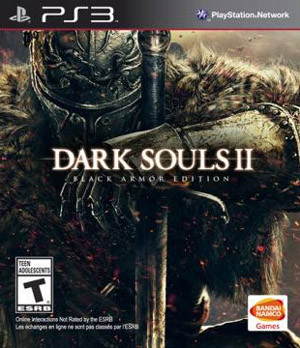 Developer: From Software
Developer: From Software Publisher: Bandai Namco Games Platform: PlayStation 3/Xbox 360 Release Date: March 11 Dark: Oh yes MSRP: $59.99/$119.99 (Special Edition) Dark Souls II arrives next week, and fans are prepared. Across the nation, they're donning their hair-shirts and affixing their thumbscrews, all while their iPods pipe an obliterating cycle of Lou Reed's Metal Machine Music into their ears. We jest, but Dark Souls openly promoted itself with the tagline “Prepare to Die,” and the sequel appends a telling “again” to that phrase. Demon's Souls and Dark Souls let players loose in a vast, dingy deathscape of a kingdom full of monsters, traps, sudden drops, and another convenient methods of inadvertently doing oneself in. That's how you'll learn to progress in the game, to guide your assembled character through the hazards in action-RPG fashion, gathering better weapons and dribbled-out backstory. And if you should die in Dark Souls …well, you can roam around as a decaying spirit. It's actually somewhat liberating. Dark Souls II doesn't cut players much slack in this sense. It's even crueler to the undead: slain adventurers have their maximum health lowered if they die too often in pseudo-zombie status, and other players can now invade the game sessions of deceased souls, just as they can break into those of living characters. The combat mechanics of Dark Souls improve mostly by increment, with a better jumping method and little weaponry refinements, and the game promises to mess with players' heads through hallucinations, acrophobia, and other things that may well distress the player in real life. It's all the series can do until Dark Souls III figures out how to hop from the console, wend snakelike around the room, and tear out the player's femoral artery. Then fans will love it even more. |
TITANFALL Developer: Respawn Entertainment
Developer: Respawn Entertainment Publisher: Electronic Arts Platform: PC/Xbox One Release Date: March 11 Best Metal Warrior: Ballistic MSRP: $59.99 Here we go. The new-generation console war was far too quiet for the past two months, but now we have a notable salvo from the Xbox One to the PlayStation 4. It's Titanfall, a futuristic first-person shooter with giant battle-robots and a Call of Duty pedigree. And it's the first big Microsoft exclusive since the Xbox One's launch. Of course, it's also out for the PC, and there's an Xbox 360 treatment coming later this month. But the Xbox One version carries the highest expectations here. Titanfall unfolds in a region of colonized solar systems called the Frontier. There, the Interstellar Manufacturing Corporation is at odds with the Militia, a hodgepodge of colonists and criminals who rise up against Big Manufacturing in violent ways. Their wars play out with all the gritty urban carnage and ambient chatter of a Halo or Killzone, but the giant mechanical suits change things up a bit. Stylistic amalgamations of Lost Planet suits and Michael Bay's Transformers, the Titans include the multi-purpose Atlas mecha, the heavily armored Ogre, and the speedy Stryder. Not as diverse as say, the Metal Warriors lineup of spider-mechs and rolling cannon platforms, but it's a good start. Players can hop into Titans and pilot them just as easily as they go about regular combat, and other players can ride on other Titans, hijack enemy mecha, and stage team-up attacks to bring down the robot soldiers. While roaming around in a Titan has undeniable advantages when it comes to attacking (and ripping enemy pilots from their mecha like a vet pulling kittens from a birth canal), the game balances things by giving on-foot soldiers greater mobility and useful anti-Titan weapons. The multiplayer modes support up to six players on each team, and various AI recruits and Titans let up to 50 characters roam the battlegrounds. A shame there's no cross-platform play.
|
YOSHI'S NEW ISLAND Developer: Arzest
Developer: Arzest Publisher: Nintendo Platform: Nintendo 3DS Release Date: March 14 Best Shyguy: The Mario Kart DS one MSRP: $39.99 Yoshi's New Island poses a shocking revision to the original Yoshi's Island. The old Super NES game wrapped up with infant Mario and Luigi reunited, but Yoshi's New Island reveals that the two brothers are at the wrong house. Baby Luigi is then abducted by the archmage Kamek, leaving an entire Yoshi colony to guide Baby Mario to safety. Yes, the happy ending of Yoshi's Island was a lie all this time. It's just like Chrono Cross and Advance Guardian Heroes and those Willow sequels that killed off half of the main characters. Yet Yoshi's New Island is still a happy game, just like the beloved old Yoshi's Island and the less beloved and more recent Yoshi's Story and Yoshi's Island DS. A Yoshi ferries Baby Mario through Crayola-bright levels filled with cute foes and novel ideas, and Baby Mario floats away and shrieks plaintively when his Yoshi mount is struck. The major Yoshi evolution this time around is the ability to lay and fire enormous eggs, usually though eating similarly sized enemies. Certain levels also see Yoshis turn into helicopters, submarines, minecarts, sleds, balloons, and jackhammers. Most of the enemies are returning bit players, from the flying Shy Guys to the bluish hedgehogs who most certainly do not represent any former rival company mascots. New Island does, however, have shapeshifting and metal variants on the standard Shy Guy. It may be a nice relaunch of everything that made Yoshi's Island a standout in the chaotic times of 1995, though developer Arzest was formed from the ruins of Artoon…the makers of the well-meaning but unadventurous Yoshi's Island DS.
|
discuss this in the forum (28 posts) |
this article has been modified since it was originally posted; see change history